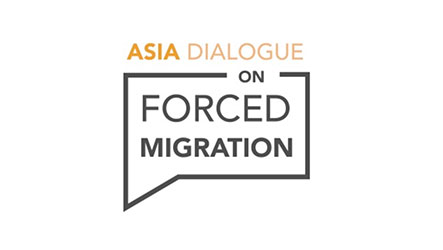While the media and political worlds are focused on Copenhagen as ‘the most
important meeting in history’, the science tells us a very different story. The
reality is that there is nothing on the table in Copenhagen that would get us
remotely to where the science tells us we have to be to stabilise the global
climate. This actually makes Copenhagen just a training exercise.
Amidst the noise of the day-to-day debates, we have lost sight of the
simple logic of the advice coming from the world’s top climate scientists.
Despite the uncertainties in the details, the science carries one underlying
message from which we can draw only one rational conclusion: it is time to
declare a global emergency and mobilise all available resources, political will
and human ingenuity towards one task – to reduce the risk of catastrophic
climate change to an acceptable level.
The real action will begin when the world ends its denial and accepts that
we need to bring CO2 concentrations below 350ppm, and that means eliminating
net greenhouse gas emissions from the economy, probably in about 20 years. The
objective will then be to ensure the global temperature is stabilised at around
1 degree above pre-industrial levels. This will require a war-like mobilisation
across the global economy.
We are completely capable of such a response, but only when we decide that
failing to do so puts the future of global civilisation at risk – which it
does. Then remarkable things will happen. We’re not ready yet, but we soon will
be. In the meantime observe the training exercise for a taste of what’s to
come.
Professor Jorgen Randers and I have recently released a paper detailing our
response to this conclusion. ‘The One Degree War Plan’ began to take form a few
years ago, the product of a challenging conversation between Jorgen and myself.
Jorgen, a lifelong advocate for action on sustainability, rose to prominence in
1972 as one of the original authors of the Club of Rome’s famous ‘Limits to
Growth’, the bestselling environmental book of all time – over 30 million
copies in 37 different languages.
Jorgen and I had both accepted the scientific reality and were discussing
the question it posed – what would a rational response to the climate science
look like? If you stripped away all the politics and debate and took a fresh
look, what would be the logical action plan?
In 2008, after many more such conversations, we decided that we needed to
articulate our answer to that question, in detail and on paper.
We started by considering what the science meant, in human terms. This was
the simple part, as the peer-reviewed climate science is very clear on the
level of risk. There is a high degree of certainty that humanity will face
severe disruption to the global economy and society, with widespread economic
damage, geopolitical instability and human suffering. Perhaps more importantly,
there is a lower but still significant risk of catastrophic collapse – of
tipping points being passed that would lead to the effective collapse of our
current civilisation and economy. Once this was understood, we could begin to
consider what a logical response to this level of risk would be.
But before we got there, we made another initial but fundamental
conclusion: that the momentum in the climate system is now so great that the
world will, before long, wake up to a threat of this magnitude. It will
recognise that despite the remaining uncertainties, we cannot afford to risk
the collapse of the global economy and civilisation. Thus an appropriate
response – one that recognises the science and the true scale of the risk –
will occur.
When this emergency response is designed, we concluded that it would need
to aim to bring warming below 1 degree, and therefore, CO2 concentrations below
350ppm. Anything less would leave civilisation at too great a risk of
catastrophe, and would therefore be irrational. Our remaining task was then to
develop a plan of action that was capable of achieving this outcome.
This
paper is the result. It has taken over a year of development and research,
including considerable feedback from colleagues and modelling by C-Roads, the
climate simulator developed by MIT, the Sustainability Institute and Ventana
Systems.
We were actually surprised by the outcome of our work, which showed that
not only is One Degree and 350ppm possible, it is surprisingly achievable and
practical. It certainly requires that we act very soon and that we act with a
level of determination and commitment not seen since WWII, but it can be
achieved. In recognition of this comparison, we called our paper The One Degree
War Plan. It is a plan that shows what humanity can achieve – and we believe
will achieve – when it develops a rational response to the climate threat.
We are releasing our paper for public reaction and comment, because we recognise
that this is not an intellectual exercise. A response like the One Degree War
Plan, if it is to be implemented, is going to require years of development by
global experts across many disciplines. It will also require strong public
support globally if our political leaders are to have the courage to adopt such
an approach. This in turn will only happen if many millions of people engage
and decide that, in the end, we are a rational species and this is the way
forward we consciously choose to take.
Building a robust plan and the support to implement it is of course an
enormous task. So we think now is a good time to start. We encourage you to
consider this paper, to circulate it amongst your networks and to help us
together build the courage we need to face reality.
Download Paul Gilding and
Jorgen Randers ‘The One Degree War Plan’ here.



